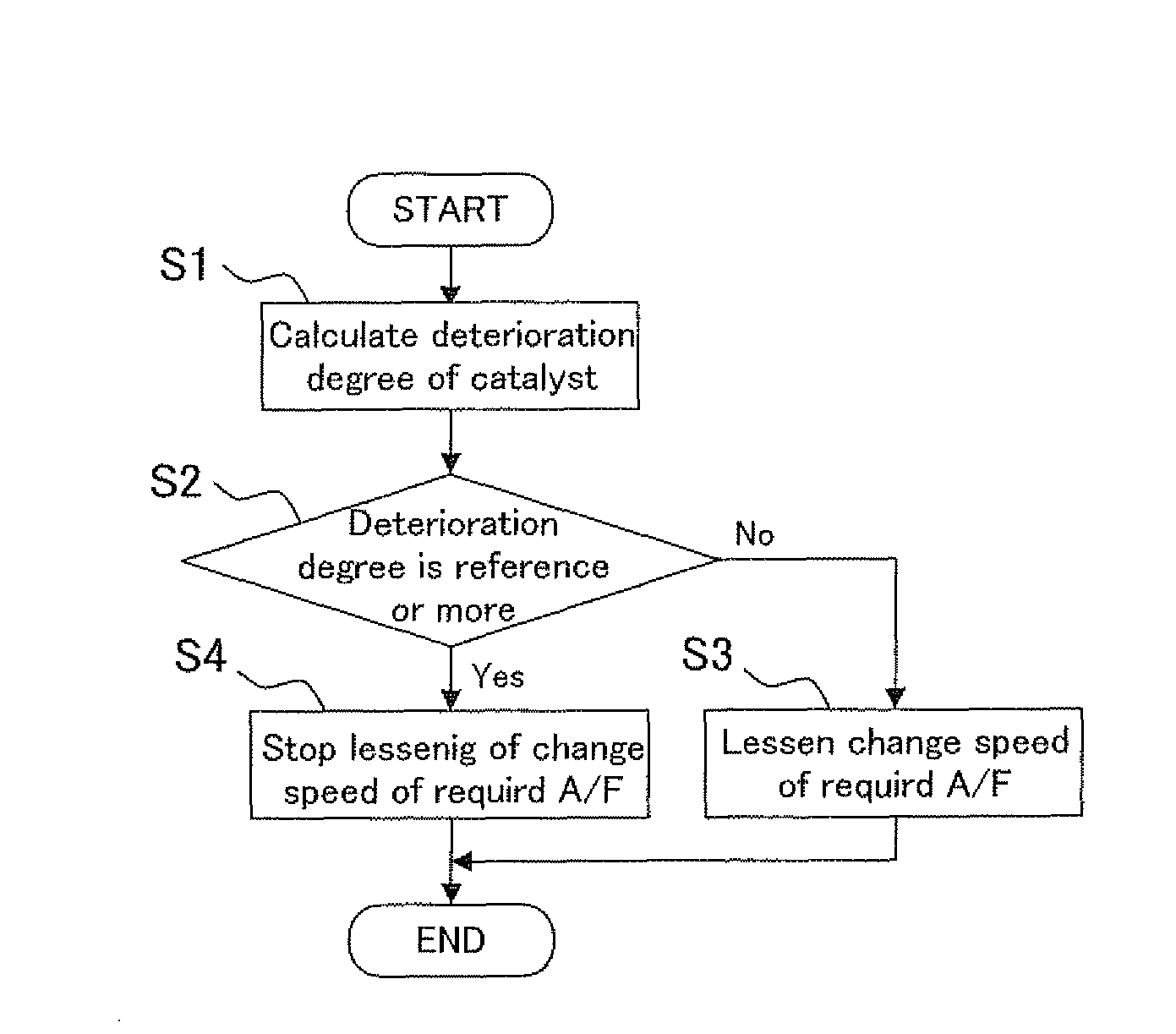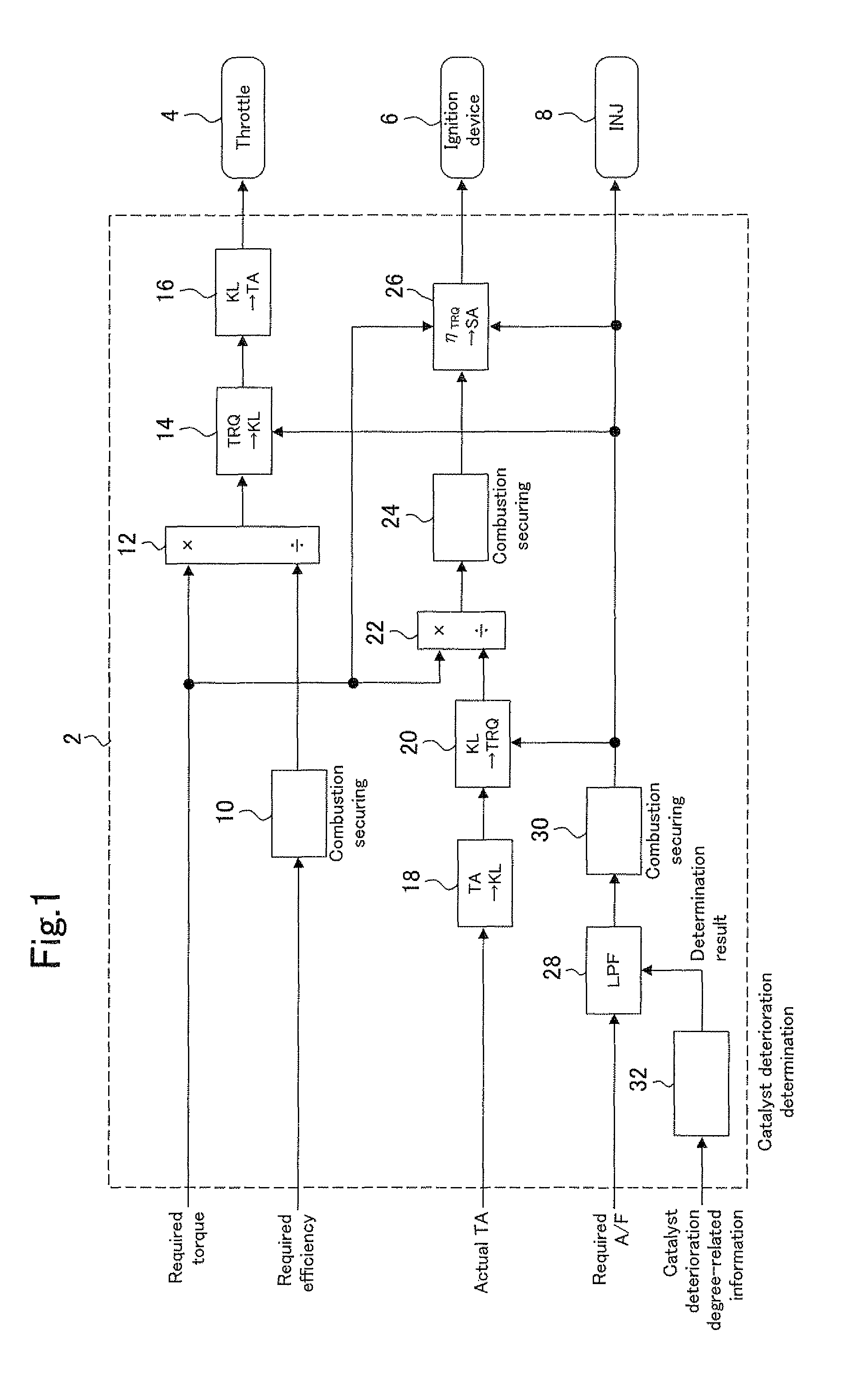Control device for internal combustion engine
a control device and internal combustion engine technology, applied in the direction of electrical control, process and machine control, instruments, etc., can solve the problems of low oxygen storage ability, depletion or saturation of oxygen storage amount, and the inability to achieve high torque realization precision, oxygen storage, and emission performance. to be kept in a high sta
- Summary
- Abstract
- Description
- Claims
- Application Information
AI Technical Summary
Benefits of technology
Problems solved by technology
Method used
Image
Examples
Embodiment Construction
[0019]An embodiment of the present invention will be described with reference to the drawings.
[0020]An internal combustion engine (hereinafter, an engine) which is an object to be controlled in the embodiment of the present invention is a spark ignition type four-cycle reciprocal engine. In an exhaust passage of the engine, a catalyst (three way catalyst) having an oxygen storing function is provided. An air-fuel ratio sensor is disposed upstream of the catalyst in the exhaust passage, and an O2 sensor is disposed downstream of the catalyst. Further, an air flow meter is disposed in the exhaust passage of the engine. A control device controls an operation of the engine by manipulating actuators included in the engine. The actuators which can be manipulated by the control device include an ignition device, a throttle, a fuel injection device, a variable valve timing mechanism, an EGR device and the like. However, in the present embodiment, the control device manipulates a throttle, a...
PUM
 Login to View More
Login to View More Abstract
Description
Claims
Application Information
 Login to View More
Login to View More - R&D
- Intellectual Property
- Life Sciences
- Materials
- Tech Scout
- Unparalleled Data Quality
- Higher Quality Content
- 60% Fewer Hallucinations
Browse by: Latest US Patents, China's latest patents, Technical Efficacy Thesaurus, Application Domain, Technology Topic, Popular Technical Reports.
© 2025 PatSnap. All rights reserved.Legal|Privacy policy|Modern Slavery Act Transparency Statement|Sitemap|About US| Contact US: help@patsnap.com



